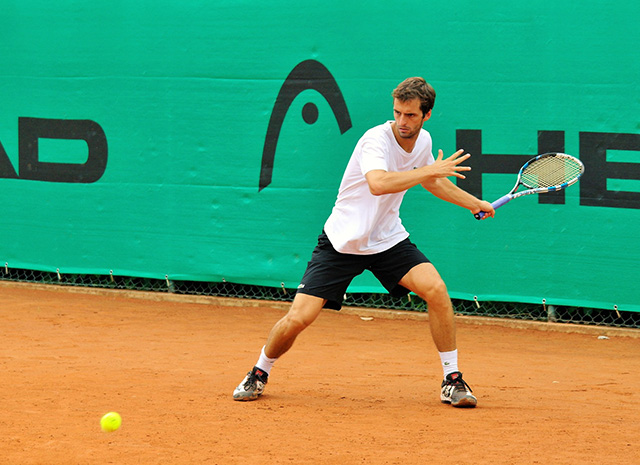It is important to understand the energy systems when setting training programs. Here they are explained in simple terms. For a more complex explanation of the energy systems, see here.
 tennis players utilize all energy systems
tennis players utilize all energy systems The food we eat, in the form of carbohydrates, fats and proteins, is used as fuel for reactions in the body that make us 'alive'. To utilize these fuels for muscle action, the body converts them to a common 'energy currency', called adenosine tri-phosphate (ATP). There are essentially two mechanisms for producing ATP, the aerobic and anaerobic pathways. 'Aerobic' means literally with oxygen, while 'anaerobic' means without oxygen.
For low-intensity activities, for example sleeping, working and jogging, and more intense however sustained activities such as marathon running, the ATP required for muscle contraction is produced primarily by the aerobic pathway. The rate that ATP is supplied by the aerobic processes is relatively slow, and therefore the rate of work output is also slow.
The by-products of aerobic metabolism are carbon dioxide, which is exhaled by normal respiration, and water. As long as there is a continual supply of fuel (eg. fats and carbohydrates stored in the body) and oxygen, aerobic activities can continue for long periods.
For more explosive movements, such as sprinting or jumping, ATP is required at a faster rate. This ATP can be supplied by anaerobic pathways. There are two pathways by which the body produces energy anaerobically. The muscle can use stores of ATP, or a similar compound called phosphocreatine, already present in the muscles.
ATP can also be produced via the lactate anaerobic system, so called as lactic acid is produced as a by-product. The anaerobic processes cannot continue indefinitely as the stores of ATP or phosphocreatine become depleted, and lactic acid accumulates within the muscles and causes muscle pain and fatigue.
During exercise, both aerobic and anaerobic systems work concurrently, however the proportion of ATP supplied from each process varies according to the intensity and duration of exercise. For example, 100m sprinters will use predominantly the anaerobic system, an 800 meter runner both anaerobic and aerobic sources, while the long distance runner will derive most of their energy via aerobic processes.
Related Pages
- The Energy Systems — in more detail
- The Human Engine
- About Sports Medicine
Disclaimer


 Current Events
Current Events